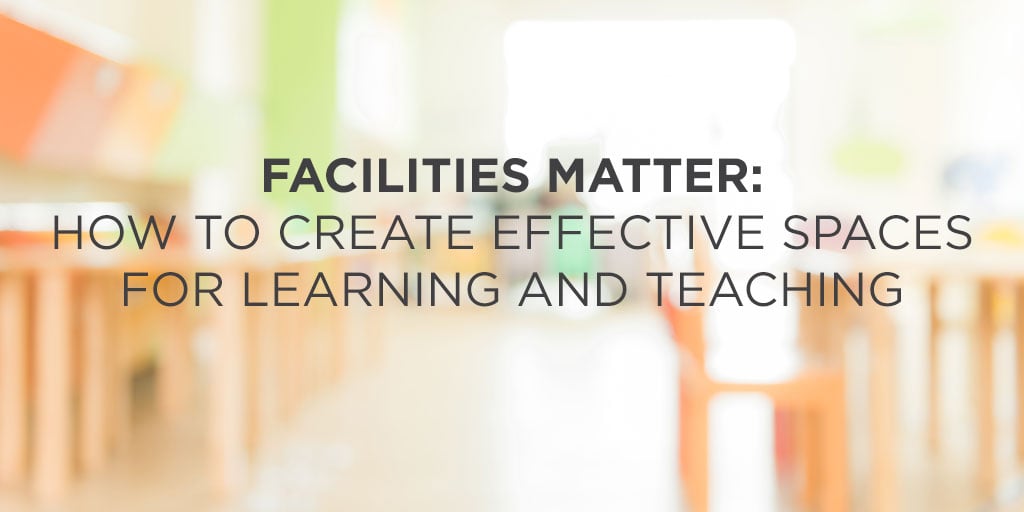
For all the time, energy, and money we put into books, technology, and curriculum, it’s easy to forget about the importance our school facilities play in student learning. The spaces we provide for students to learn in create an environment that is conducive—or not conducive—to deep learning. And while it might feel that as teachers we can’t impact our physical classroom too much, we can have a greater impact than we may think.
When we think about our “classroom environment,” we should think much broader than just flexible seating or the posters we put up. Classroom facilities involve the size and space of the classroom, the temperature and sound of the classroom, the flow of the classroom, and the look of the classroom.
Here are some aspects of facilities that are important to consider as we try to make learning more conducive in our classrooms:
- Air quality: This is one factor that we may not consider right off the bat, but poor air quality can be a real issue in a classroom. Students with allergies can have serious complications if there are mold issues in the school. Odors and smells from external sources can also be distracting for students.
- Heating and cooling: More than just for comfort, the temperature of the classroom can create a positive (or negative) learning environment for students. Unfortunately, control of the classroom temperature in many schools isn’t given to teachers—it is controlled from a distant location. Even so, on hot or cold days, the classroom needs to feel comfortable for both the teachers and the students.
- Natural and adequate light: The light in our classrooms is important. At times, it needs to be bright for reading and other activities. At other times, it needs to be dim and calming. Natural light is a great solution to this, but many newer schools unfortunately don’t have much of it. Another consideration is how light impacts the effectiveness of a classroom projector. New Mimio projection systems are bright enough that lights don’t need to be dimmed to see the projection, but with older lamps and projectors, sometimes the lights have to be turned off to see them.
Can teachers control much of this? Maybe more than you'd expect.
Space heaters or fans are inexpensive ways that teachers can help to control the climate. There can be some limitations to these, so make sure you are following all of your school’s expectations for these devices. Lamps can create lighting that is both brighter if needed or better to calm students. Teachers (and principals) know how great natural light is, so they can open windows and pull back blinds if that is an option. Air quality is a little harder to manage, but in-room filters work well to recycle fresh air in the classroom. Teachers are resourceful and creative, so they can usually find solutions to all sort issues—including facilities issues such as these.
With that said, teachers need to remember to be advocates for their space, too. The facilities director and superintendent won’t be in the classrooms nearly as much as our teachers are, so teachers are the first voice in making sure problems are fixed. Even for small issues, advocating is essential. Preventative maintenance helps to keep small problems from growing into big problems. If a classroom teacher can catch the leak in the ceiling, the crack in window, or the unusual smell in the classroom, it can potentially save thousands of dollars later on.
It is also good to remember how technology can play a key role in making a classroom more conducive to learning. The location of the whole-class display matters as it creates a structure and a flow to the classroom. It may not be an option to put the screen in just the right spot, so a portable solution may be a good fit in that instance. Another technology option for students should be considered if the technology is available. If student devices are in fact available, it frees up space and provides options for where students sit around the room.
The physical learning environment may not be the most important piece of student success, but it does matter in how the students learn and live in the classroom setting. With a few creative ideas and thinking outside of the box, teachers can make sure that students feel comfortable and are ready to learn each and every day.
For more insightful teaching tips, and to stay up to date with the latest news and trends in education, be sure to subscribe to our Educator blog today!



